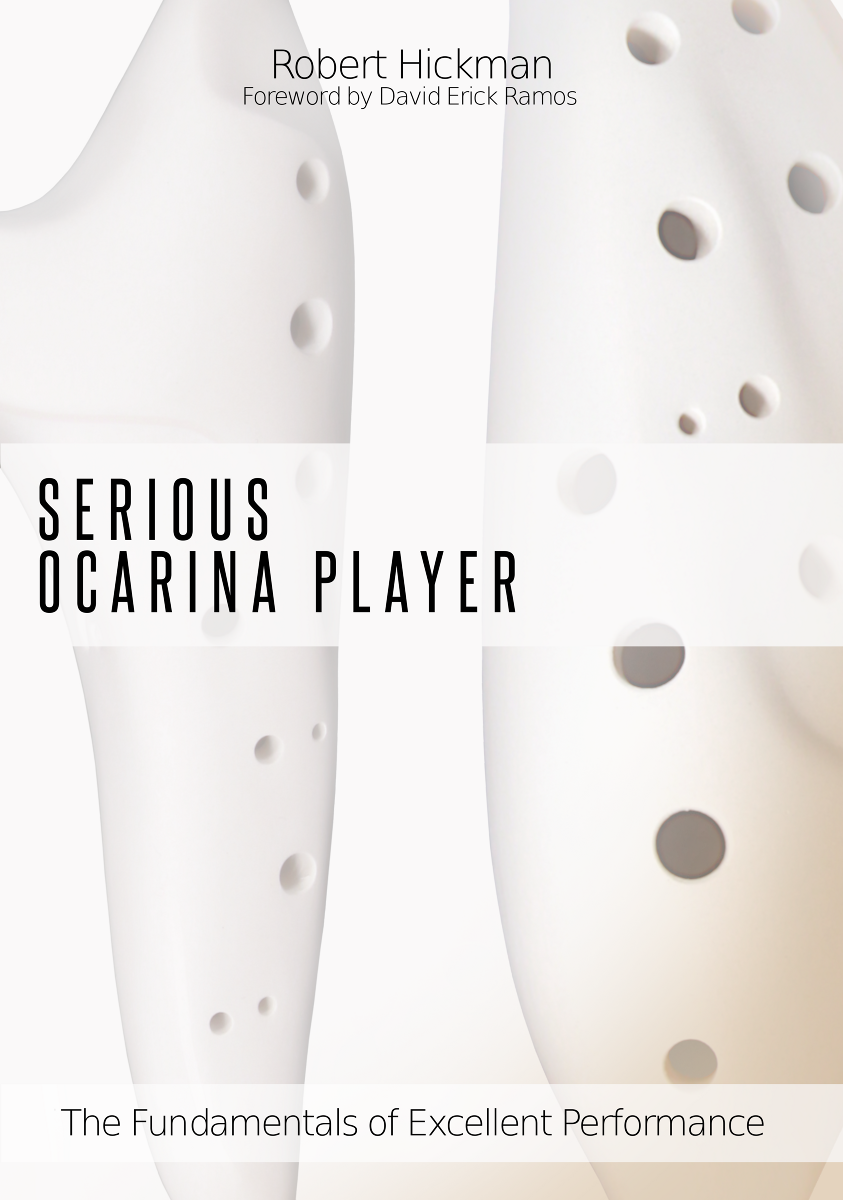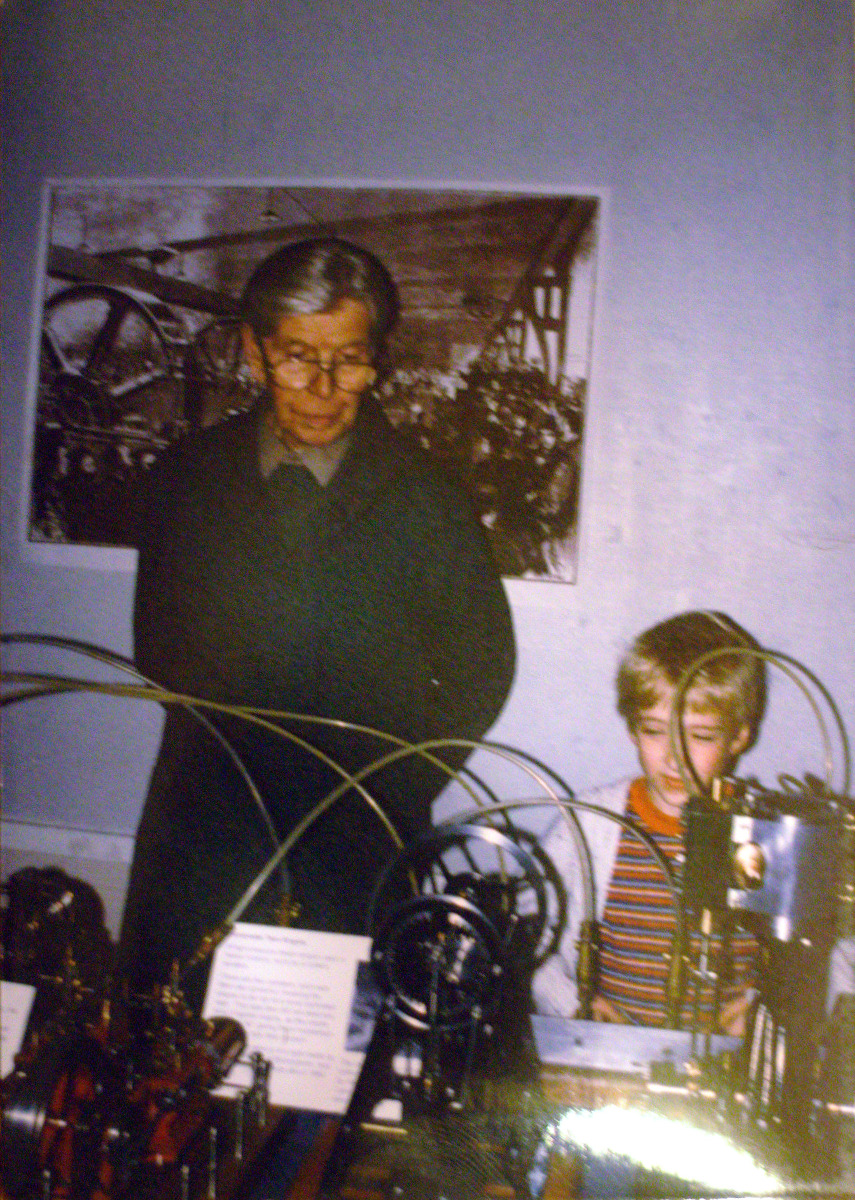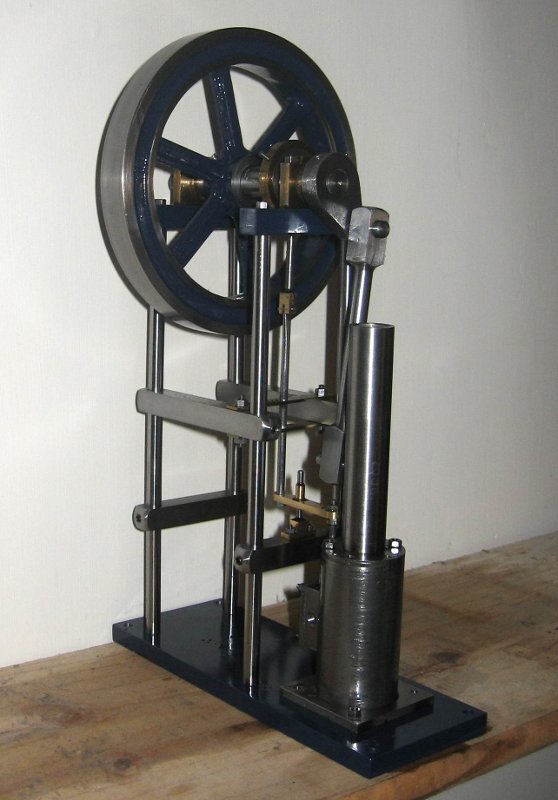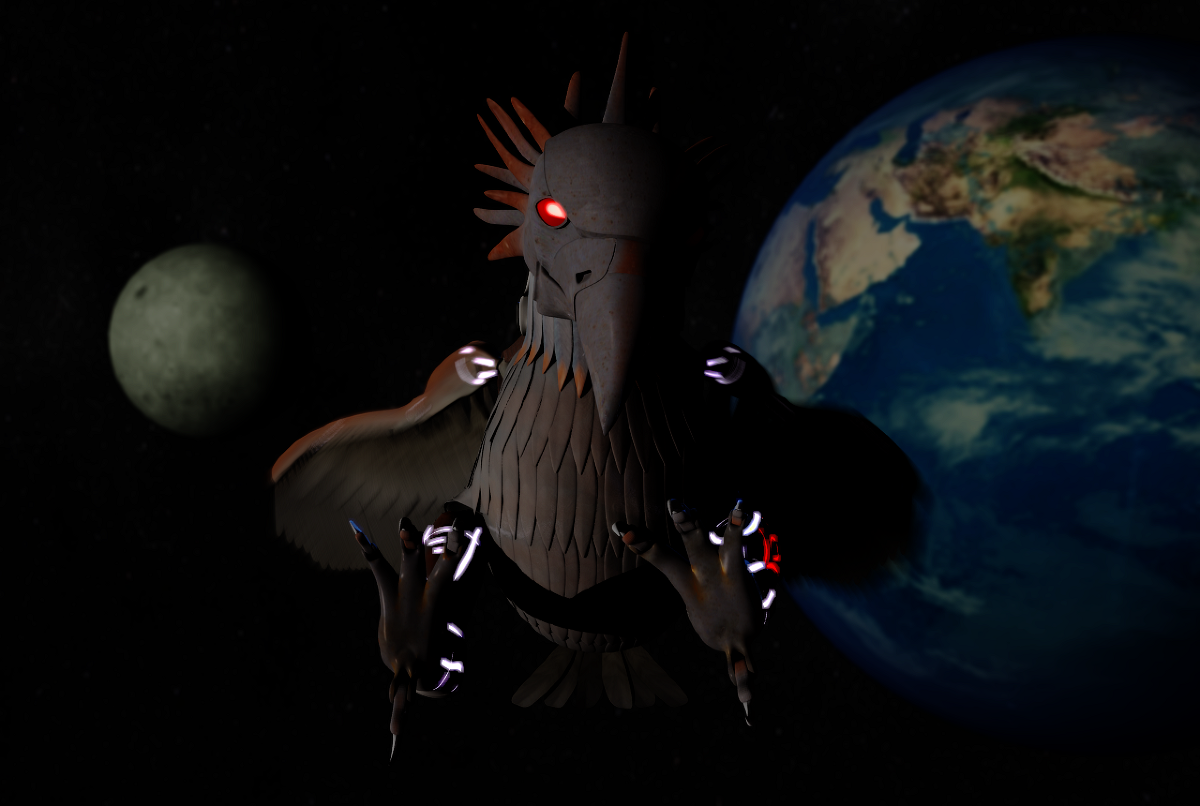Irish traditional music and Italian ocarina
I play Irish traditional music on Italian-type ocarinas, using an instrument of my own creation.
I first discovered the ocarina in 2007 through David Erick Ramos's YouTube videos and was immediately captivated by the instrument's distinctive sound. The next few years, I would listen to David and others, but I did not consider learning to play myself, having no background in music.
That changed in 2011 when I was working in web programming and wanted something to do that did not involve computers. I bought my first ocarina and started learning to play in the evenings after work.
Rather than playing video game music as many ocarina players do today, I started adapting Irish traditional music to the instrument, focusing on authenticity and basing my playing style on the playing techniques of the tin whistle. The interest in Irish music may have been inspired by my gran, who would often play folk dance music to me in the car when I was a child.
Ocarina Making – Pure Ocarinas
I am the owner and maker behind Pure Ocarinas and have been making ceramic ocarinas professionally since late 2011. My focus has been on developing instruments that meet the technical demands of Irish traditional music, and I mainly make instruments in keys that fit this style.
I have also made many innovations in the ergonomic design of transverse ocarinas and documented playing technique in my books 'The Art of Ocarina Making' and 'Serious Ocarina Player' (see below).

Books
I am the author of two books: 'Serious Ocarina Player' and 'The Art of Ocarina Making':
Serious Ocarina Player

My book 'Serious Ocarina Player' is a 'bottom-up' ocarina method and quite different from typical instrument method books. It gradually introduces how the ocarina and music practice work from first principles.
Exercises were kept to an absolute minimum because the book focuses on giving learners the knowledge to craft their own exercises and develop learning approaches to fit their own goals.
'Serious Ocarina Player' came about as I started writing articles to answer my customers' repeated questions. The second edition comprises 500 pages in A4 format and is surely among the most detailed resources for this instrument.
It was, of course, never intended to be as big as it became, as I approached the ocarina from the then-widespread idea that it was 'easy'. However, as I researched, more facets emerged, and the book kept growing.
Click here to read the book online.
The Art of Ocarina Making

'The Art of Ocarina Making' details the process of making ocarinas and covers the physical process, as well as the reasons behind why design choices are made. Ocarinas are surprisingly versatile instruments and can vary widely in volume and timbre.
The book was initially published in 2011 and was based on notes that I'd made while experimenting and learning to make ocarinas myself. It was subsequently updated to include more information on ergonomics and the tuning process.
Workshops and private ocarina tuition
I've taught introductory ocarina workshops at festivals around the UK, including the Sidmouth and Chippenham folk festivals. I've also taught a seminar at the Budrio Ocarina festival on sympathetically adapting the playing style of Irish traditional music to ocarinas.
Where time allows, I teach a small number of private students via Zoom, focusing on developing strong fundamental technique and fostering early learner independence.
Click here for more information.

How I learned to make things
I have been making things with my hands since I was about five or six. When I was young, my dad often made model ships and also did things like car maintenance and DIY projects. He would invite me to watch what he was doing, and I started to help as I got older.
I first started making model boats with my dad's help, then moved on to model aircraft and other things.
My gran often took care of me after school, and her house had a room full of Fishertechnik models made by my grandad, as well as another room full of ZX Spectrum computers. I enjoyed playing with these when I visited.
I enjoy Victorian technology and used to be obsessed with stationary steam engines, enjoying watching all of the exposed moving parts. I often stayed with my gran over the school summer holidays, and one summer, a model maker was exhibiting at the Derby Silk Mill industrial museum.
Gran took me there many times to see and talk to the model maker, and eventually, he invited me behind the table to operate the engines for people. He also taught me how they work.

Some time later, my dad got me a lathe, and I learned to use it on my own by reading books like 'The Amateur's Lathe' and others that someone donated to me. Using this knowledge, I made a Stuart 10V from castings, then designed and built the engine shown below from bar stock.

I gradually moved away from metalwork and spent several years, between about 16 and 20, learning 3D computer modelling and graphics in Blender, programming in several languages, and using the Linux operating system.
The image below is a 3D rendering (digital artwork) I made in Blender around 2008:

Today I have a general familiarity with woodwork and metalwork by hand and can handle most 'DIY' type projects without difficulty. Unfortunately, I have not had the time to work on these kinds of things recently due to my work with the ocarina.
I can pick up other hand skills easily, and most recently, I've been slowly learning the basics of drafting and sewing clothing.
Social dancing
I enjoy social dancing, particularly Contra, Ceilidh, and Balfolk. Contra and Ceilidh are both relatively simple, being essentially 'walking to the music', and the fun comes from interactions with other dancers and movement patterns within the group as a whole. For example, here is a typical contra dance:
The simplicity of the base of these dances enables improvisation, such as twirling flourishes. Some people expand on this by incorporating aspects of swing dance and more complex stepping.
Balfolk dance broadly refers to an amalgamation of traditional dances from France and continental Europe. It includes some group dances, like the Chapelloise and Gavotte de l'aven, and many couple dances, like Bourree, Waltz, Mazurka, and Schottische.
My interest in these dances may also stem from my grandmother, who practised many forms of folk dancing, including Playford and Longsword. She often talked about it with me when I was a child.
The phenomenon of universal skirt wearing at contra dances
When I first started doing contra dancing, I was surprised by the number of people, both men and women, dancing in skirts. It was unexpected because skirts are culturally seen as feminine in Western fashion. Yet in this environment, people were having fun, and nobody paid any notice.
Intrigued, I tried to find resources on the history of this. I saw many videos showing the same practice at contra dances in the USA dating back to 2010. Obviously, it had been a thing for some time, but apparently, nobody had documented when or how it started.
That led me to do some casual research, which turned up many amusing stories in Usenet newsgroups from the 1990s. To the extent I have been able to determine, the phenomenon originated in the late 1980s. In case it's any interest to anyone, I collected the quotes I found in an article: A timeline and history of men wearing skirts at contra dances.
So, why are skirts popular at contra dances? You don't get as hot, and they are fun to dance in.
My views on Neurodiversity
Just like there is diversity in physical characteristics, there is natural variation in how different people think and perceive the world. This is called Neurodiversity, and one could say it is like people having different operating systems. I do not consider such differences 'disorders' in the sense of a biological 'malfunction'; they simply exist.
Human behaviour is a mixture of conscious choices, hard-wired instincts, and biases that evolved through natural selection. It would, in fact, be unusual if humans were neurologically identical because evolution works by creating mutations and seeing which ones survive. These mutations happen in neural wiring just as much as for physical difference like height or eye colour.
Variations exist in human neurology because there are many ways of being successful. The world is not the same everywhere, and different traits are beneficial in different situations. Biology is good at exploiting this.
That being neurodivergent can be disabling today is a symptom of society. Society at this time forces everyone to work within a very limited set of options, not recognising that things can be done in many different ways. Thus, if someone cannot function that way, they are deemed 'broken'.
Misunderstandings can also easily arise between people having different neurotypes. People communicate using body and spoken language, but if different people perceive something in different ways, one person can interpret a communication to mean something very different to what was intended, or may not understand it at all.
Humans tend to be superstitious of things that they don't understand, and many widely held views around neurodiversity appear to me similar to how past generations invented the concept of witchcraft. Those people were dependant on farming to survive, yet did not understand the forces driving the weather: a storm could cause crop failure and famine. The idea of witchcraft came about due to fears that some people could influence the weather and other things for malicious intent.
Obviously the development of science allowed us to understand the weather, quashing such fears. I think a similar perspective shift is needed in the case of neurodivergance.
I believe that solving the issues faced by neurodiverse people is a matter of widespread education in the following points:
- By understanding that people are different, we create a clear understanding for why other people may not behave the same as oneself.
- By understanding the environments wherein different neurotypes function most effectively, they can choose to operate in ways that work for them and find other people of similar neurotype they can easily connect with.
- By understanding how different neurotypes communicate, it becomes possible for people with different neurotypes to communicate effectively and avoid misunderstandings.
If they are free to do so, people of a given neurotype appear to instinctively flock together and automatically fall into societal roles that align with their neurotype. Context matters a lot, and it is very easy to find examples of people who were struggling, who are now absolutely thriving due to a change in environment and the elimination of arbitrary rules.
I have shared more thoughts in the following articles:
- Mental specialization: A positive reframing of autism and neurodiversity,
- Living with a persistent drive for autonomy.
- Behaviour mirroring, developing social skills in real situations without logical analysis.
Programming
Pure Ocarinas website
The website for my business was written from scratch and is mostly server-rendered, with sparse use of JavaScript for some interactive teaching aids. Performance was a priority from the start, using plain code with little abstraction, and features:
- A fully custom shopping cart that does not require user registration.
- Content versioning, allowing content to be edited and published later.
- Content formatting, using a custom markup language with an AST-based parser.
BVersion
https://github.com/robehickman/BVersion
BVersion is a simple, centralised version control system for managing binary image and video files. It includes features such as atomic commits, partial checkouts, and has minimal metadata overhead.
The tool's design largely follows that of Subversion, but minimises client storage overhead by storing only a single copy of each file. Server data storage is represented as a directed graph, similar to git. Client-server authentication uses libsodium, and data can be encrypted in transit using TLS.
Writing my two books involved working with numerous images, and I wrote this tool to track changes to them. I created BVersion after years of trying pre-existing solutions, none of which worked reliably or provided the features I needed. In particular, a system that uses manual commits was essential.
Articles related to programming
- Implementing a drag and drop sortable list in vanilla JavaScript using pointer events.
- Recommended programming lectures.
Pets
I've been keeping chinchillas since I got my first one at 14—an adorable, very tame Beige (I think) female that I called Chilly. She was so tame that she would sit on your shoulder like a parrot as you walked around.
She died in 2019 of old age. I then adopted 'Babs', an elderly and very large female chin from the RSPCA in Bristol, and had her for a few years until she also passed from old age.
I now have another Beige chinchilla, this one male, called Wiggle. When I was a teenager, I also kept tropical fish for several years.
